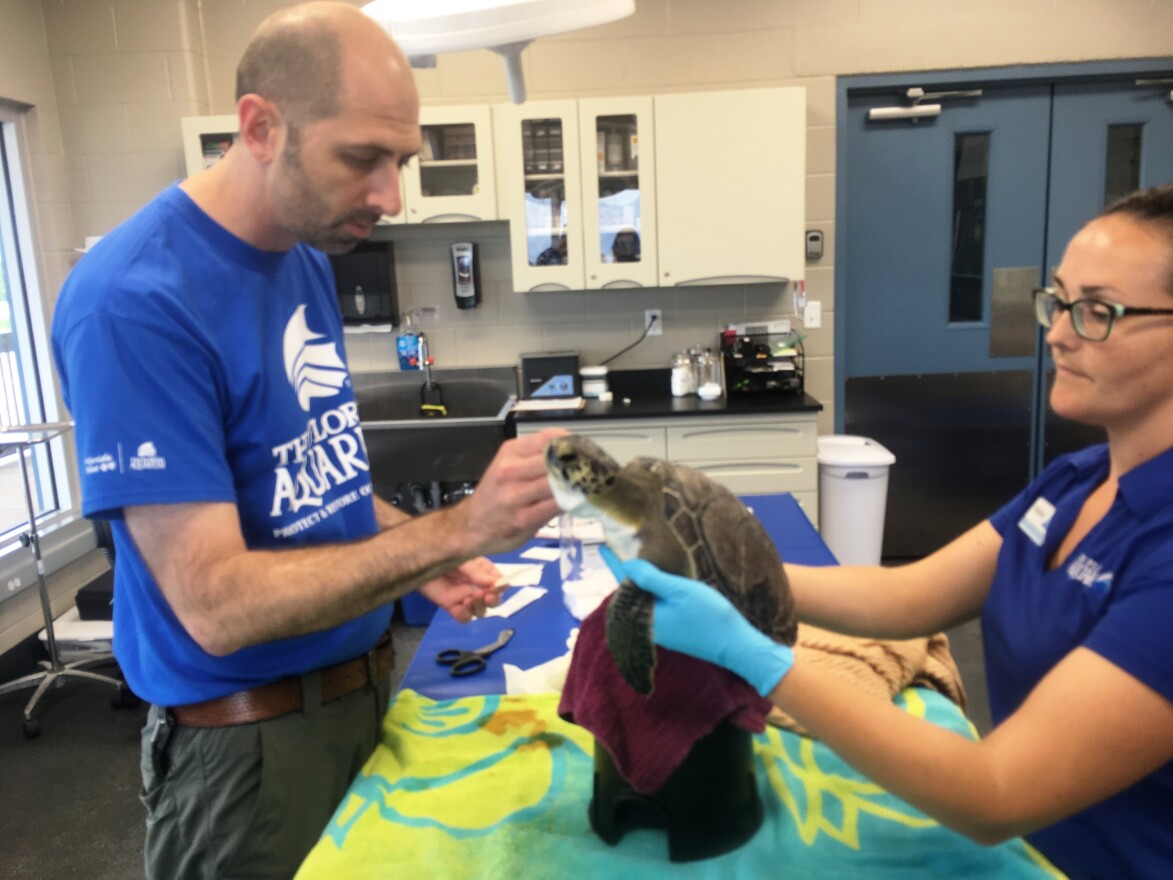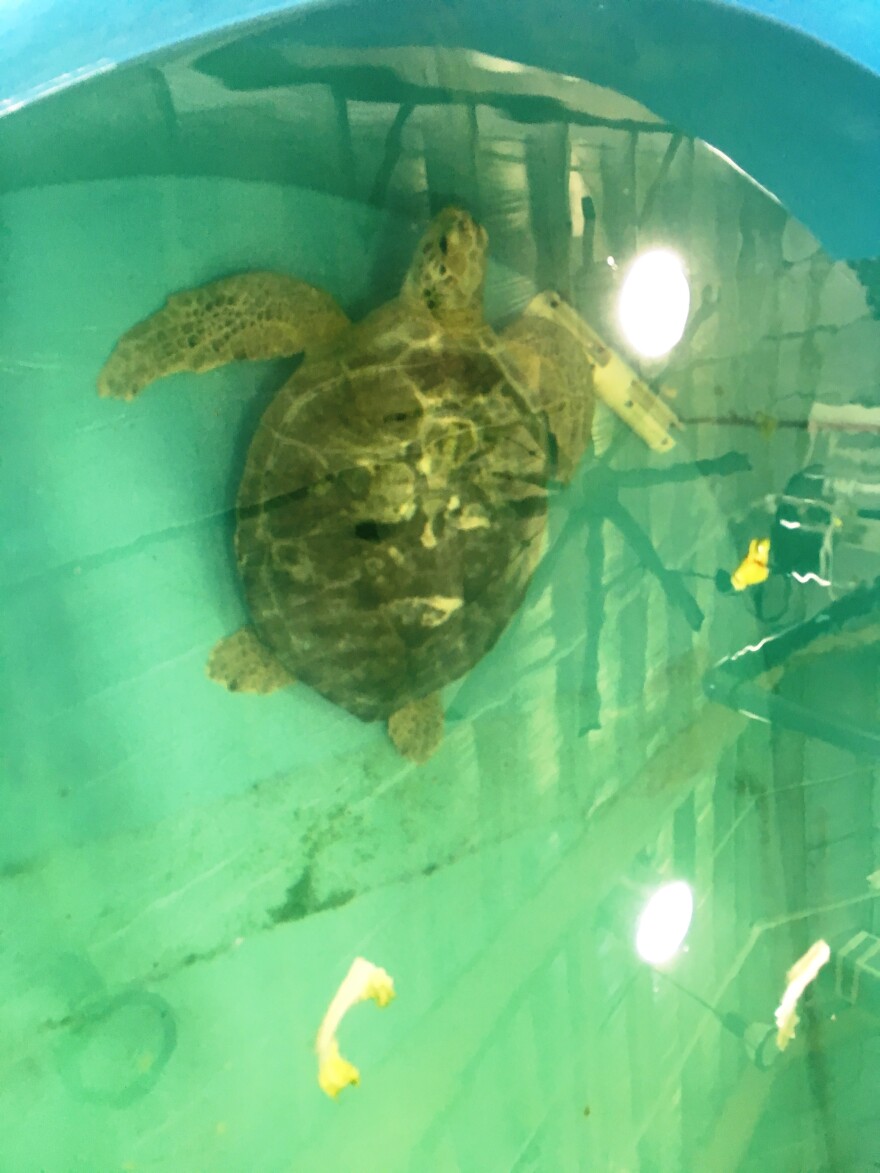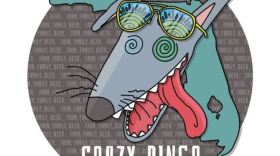The threats to sea turtles are as big as the ocean they inhabit: red tide, overfishing, rising seas swamping their nesting grounds and being stunned by the winter cold. But a rehabilitation facility in Apollo Beach that opened last year is giving a new lease on life to many endangered turtles.
I'm in the surgery suite treatment room at the Florida Aquarium's Apollo Beach unit. There, a little guy missing a flipper is carried in. His injuries are pretty severe, so Rachel Thomas, the aquarium's senior sea turtle biologist, says he's getting special treatment.
"This is Izar," she said. "This animal originally was at another facility, the Volusia Marine Science Center. And their theme this year is space. So I believe Izar is a constellation, or a planet. Something."
Just for the record, Izar - pronouced Eye-zar - is a star system located in the constellation of Boötis - pronounced boo-OH-tees. But that has nothing to do with this story.
Izar was found a little closer than that, stranded in the northeast U.S., stunned from the winter cold.
Thomas says when he came in, Izar was real skinny.
"And one of the infections, unfortunately, was so severe that it caused some severe swelling and some issues with his right front flipper, so we had to amputate that flipper a couple of weeks ago," she said. "But these guys are really tough, and they can do fine with only three flippers in the wild."
Thomas takes Izar into her hands and gently flips him over on his soft underbelly. Then, Dr. Ari Fustukjian gives him a thorough examination.
They administered some intravenous antibiotics to Izar, and Fustukjian says he should be ready to soon be released back into the wild.
"Basically, we tried to treat the infection in his arm with medication," Fustukjian said. "But unfortunately, they don't always respond. So, he got to the point where removing the arm was the only option."

Sea turtle rescue began at the Florida Aquarium in the late 1990's. But they only had a small number of rescue pools.
Now, the new $4 million Sea Turtle Rehabilitation Center has five pools - including one of the state’s deepest turtle-only dive tanks, at 11 feet deep. At 25,000 gallons, it can house even the massive leatherbacks and loggerheads.
"The loggerheads that we get in - they usually come in with what we just call chronic debilitation," Fustukjian said. "Which is a really fancy term that describes - we don't know what happened to them or what's wrong with them. Turtles are able to function for a really, really long time, in really, really bad conditions. And as a result, when we get large loggerhead turtles in, they look like zombies. They've been out there swimming and have been sick or injured for weeks or months. They haven't been eating the whole time. They'll literally keep swimming and breathing at the surface until they finally can't do it anymore, and they'll wash ashore."
https://www.youtube.com/watch?v=LG3901Ff1RM&feature=youtu.be
"The thing that really sets us apart is we have a brand new exam room and surgery suite, which is a huge help for managing critical cases," Fustukjian said. "And then the turtle deep-dive tank, which is unique in the state of Florida. It's the largest turtle-specific rehabilitation tank in the state."
They were even able to do a CAT scan on little Izar, before Fustukjian determined that his busted flipper had to be amputed.
"They come in, they're skin and bones, they're covered with barnacles," he said. "nd they're literally too weak to respond or lift their heads. And then you provide them with the right care, you treat all their secondary injuries and diseases, and they just get a whole lot of TLC from the team. And it will take them a while, but if you get to them and you manage them right, the turnaround is very dramatic."
The Florida Aquarium is part of the sea turtle stranding network, with local partners including Mote Marine in Sarasota and the Clearwater Marine Aquarium.

It took a group effort to get this new facility built. The aquarium got $3 million from the The Florida Fish and Wildlife Conservation Commission; The Spurlino Foundation and others donated about $700,000, and TECO Energy donated the land alongside Tampa Bay. The aquarium pays to keep it operating as part of their conservation mission.
Turtles do seem to get a little extra attention, Fustukjian noted. The cuteness factor is a big reason.
"I hate to say it, but that definitely is part of the equation. It's a big, charismatic animal that people can identify with," he said. "There's something about them that tugs at the heartstrings. Not for me, of course. I'm far too cynical for all that.
"That emotional connection is really what motivates people to be interested, to educate themselves, and to want to make a change," Fustukjian said. "I guess we're lucky that sea turtles are cute, because they really do help people make those emotional connections. And things that we would do on a personal level to help sea turtles are going to benefit the whole big picture."
And with that, he petted Izar on his little head, and sent him on his way.
Some sea turtle facts:
- Roughly 90 percent of all sea turtle nesting in the nation takes place on Florida's beaches.
- There are seven different species, including Flatback, Green, Hawksbill, Kemp's Ridley, Leatherback, Loggerhead and Olive Ridley.
- Of the six species found in U.S. waters, all are threatened or endangered.
- Some can live 50 years or more.
- Leatherback sea turtles can travel more than 10,000 miles every year.
- Green sea turtles can stay underwater for up to five hours.

Copyright 2020 WUSF Public Media - WUSF 89.7. To see more, visit . 9(MDAyMTYyMTU5MDEyOTc4NzE4ODNmYWEwYQ004))










